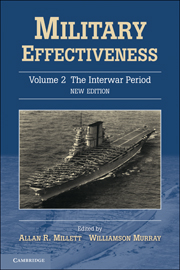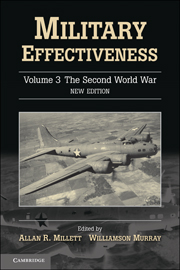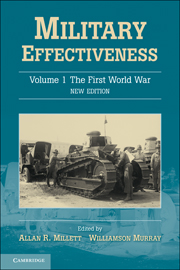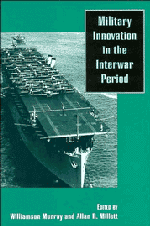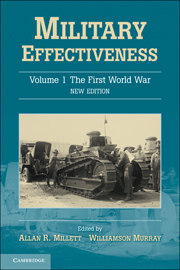Military Effectiveness
This three-volume study examines the questions raised by the performance of the military institutions of France, Germany, Russia, the United States, Great Britain, Japan, and Italy in the period from 1914 to 1945. Leading military historians deal with the different national approaches to war and military power at the tactical, operational, strategic, and political levels. They form the basis for a fundamental reexamination of how military organizations have performed in the first half of the twentieth century. Volume 2 covers the interwar period. The other two volumes address World War I and World War II, respectively.
Now in a new edition, with a new introduction by the editors, these classic volumes will remain invaluable for military historians and social scientists in their examination of national security and military issues. They will also be essential reading for future military leaders at Staff and War Colleges.
- Now with a new introduction, addresses the political, strategic, operational, and tactical levels
- Essays examine the military effectiveness of Great Britain, the United States, France, Germany, Russia, Italy and Japan from World War I through to the end of World War II
- Essays written by experts in the subject contain information, insights, and analyses that would require extensive research in unfamiliar sources, all in one convenient set of books
Reviews & endorsements
'Military Effectiveness is a first-rate historical analysis and commentary on the performance of nations at war in the most violent half-century in recorded human history. Drawing upon the considerable talents of such historians as Paul Kennedy, Holger H. Herwig, John Gooch, Earl F. Ziemke, Robert A. Doughty, Ronald Spector, Alvin D. Coox, MacGregor Knox, and Russell F. Weigley, Military Effectiveness offers a host of compelling … insights as to why 'some military forces succeed, while others fail'.' Jeffrey Record, Parameters
'This is an ambitious project that seeks to examine the military effectiveness of Great Britain, the United States, France, Germany, Russia, Italy, and Japan during the two world wars and in the interwar period … The essays … provide a multitude of valuable insights and analyses, particularly on questions such as manpower and budgetary allocations that are sometimes overlooked in studies that deal mainly with operations. Much information is packed into this work that would require extensive reading in unfamiliar sources to obtain elsewhere … It is impossible in a short review to do justice to the subtlety and complexity of all of the essays. They are of a uniformly high standard.' Paul G. Halpern, The American Historical Review
'Military Effectiveness addresses its theme in a comprehensive framework … The familiar reviewer's complaint about collective works, that they lack focus, can scarcely be applied here. These three volumes move toward their goal with the serried precision of the Queen's Birthday Review. The coherence of Military Effectiveness is not achieved at the expense of individual contributions. Their overall quality is high enough that workaday scholars are as likely to consult specific essays as to make use of the work's general lines of argument.' Dennis E. Showalter, The Journal of Military History
'As one can quickly determine from the scope, [this] is a work of great magnitude and potential … Academics using these studies will benefit from the explicit inclusion of the political level, while military professionals will profit from incorporation of the operational level rather than the former strategic-tactical construct of military studies. It is not often that one work can appeal to both audiences, and the editors are to be congratulated for adopting this schema … Its main value is that it represents the only single source of comparative studies that examine both the conduct of and preparation for war across seven cultures and over three decades that profoundly influenced the twentieth century … For the serious student of military affairs who wishes to tackle the entire series, the rewards will be in the insights gained from the almost limitless combinations one can use to structure the data.' Harold R. Winton, The Journal of Military History
Product details
August 2010Paperback
9780521737500
306 pages
228 × 152 × 15 mm
0.42kg
2 b/w illus. 2 maps 5 tables
Available
Table of Contents
- Introduction: military effectiveness twenty years after Williamson Murray and Allan R. Millett
- 1. The Soviet armed forces in the interwar period Earl F. Ziemke
- 2. The French armed forces, 1918–40 Robert A. Doughty
- 3. The military effectiveness of the US armed forces, 1919–39 Ronald Spector
- 4. The British armed forces, 1918–39 Brian Bond and Williamson Murray
- 5. Japanese military effectiveness: the interwar period Carl Boyd
- 6. The Italian armed forces, 1918–40 Brian R. Sullivan
- 7. German military effectiveness between 1919 and 1939 Manfred Messerschmidt
- 8. Military effectiveness of armed forces in the interwar period, 1919–41: a review Alvin D. Coox.

